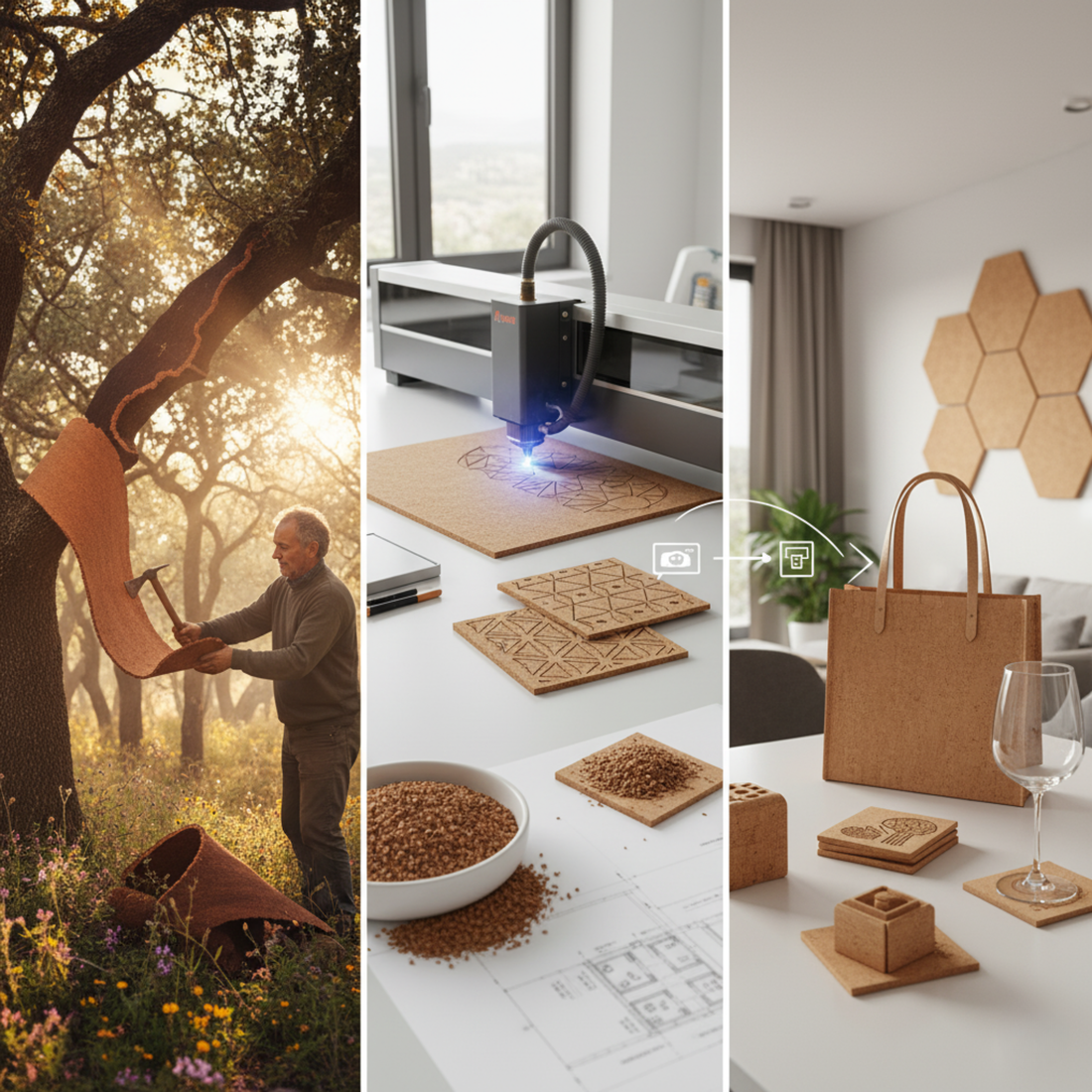
From Bark to Breakthrough: The Art and Science of Cork Harvesting
Share
From Bark to Breakthrough: The Art and Science of Cork Harvesting
Cork is not manufactured — it’s harvested. Every piece begins its life as the bark of the cork oak tree, carefully removed by expert harvesters using techniques that have changed little over centuries. This process defines cork as one of the most sustainable materials ever used by humankind.
🔪 The Craft of Harvesting
Harvesters known as descortiçadores skillfully strip the bark using a specialized axe, ensuring the tree remains unharmed. Each tree is first harvested around 25 years of age, and then every nine years thereafter — allowing for continuous, renewable production over its 200-year lifespan.
📆 The Three Lives of Cork
- Virgin Cork: The first harvest; irregular but ideal for insulation and flooring materials.
- Secondary Cork: More uniform, used for technical agglomerates and composites.
- Amadia Cork: Premium quality bark from mature trees — used to produce the world’s finest natural cork stoppers.
🌱 Sustainability in Motion
Unlike other forms of extraction, cork harvesting enhances the tree’s vitality. After each harvest, the cork oak absorbs more CO₂ to regenerate its bark — meaning that demand for cork actively supports environmental health.
💡 The Perfect Balance Between Tradition and Innovation
Today, modern cork processing combines ancestral techniques with cutting-edge technologies. Laser cutting, micro-granulation, and 3D molding are redefining how cork can perform in architecture, fashion, and engineering — all while maintaining its deeply sustainable roots.
CorkSource Insight: The more we innovate with cork, the stronger its natural cycle becomes — proving that progress and preservation can indeed coexist.
